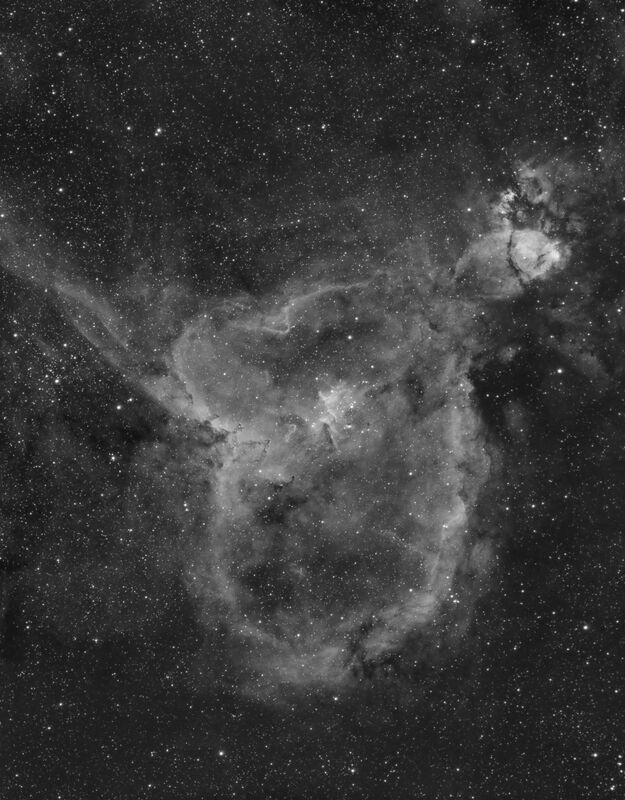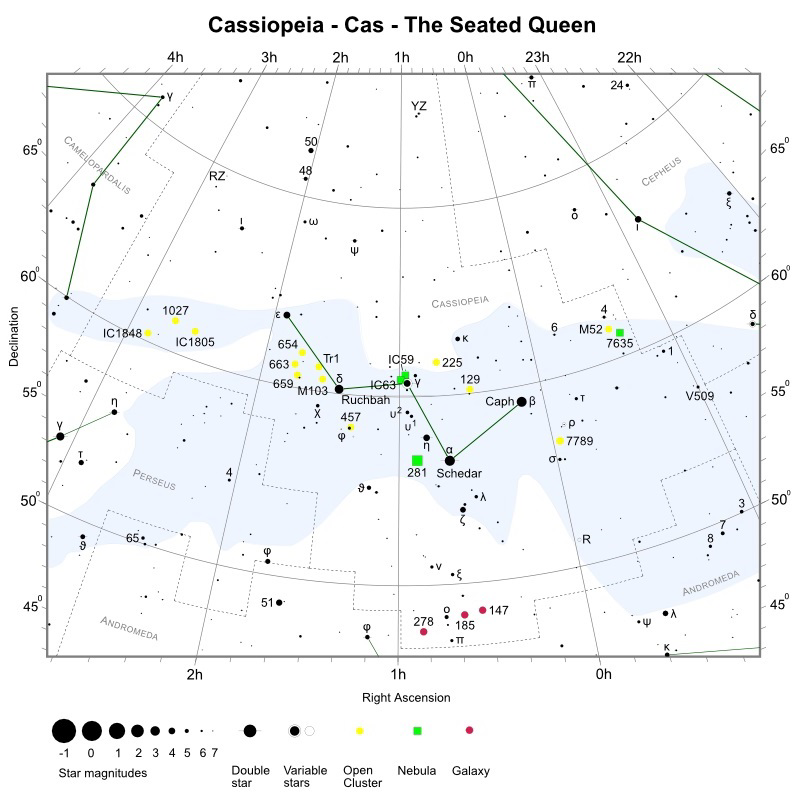|
Description
One of my first images and my first attempt at a mosaic. This image is two panes, top and bottom. The Oii and Siii filters had not arrived yet so this was an experiment / learning opportunity. Telescope - Esprit 80 Camera - QHY294 mm Pro Filter - Optolong Ha 5nm Software - Pixinsight Exposure Top Pane Ha - 29 x 10 min Bottom Pane Ha - 30 x 10 min About
The Heart Nebula, IC 1805, Sharpless 2-190 or the Running Dog Nebula because, when seen through a telescope, it looks a bit like a running dog. It is some 7500 light years away from Earth and is located in the constellation Cassiopeia. It was discovered by William Herschel on 3 November 1787. The nebula has an apparent magnitude of 18.3 and an absolute magnitude of 6.5. It is 150 arcminutes in size and known for its intensely red glowing gas and dark dust lanes forming a shape that resembles a heart symbol. The Heart Nebula forms a famous complex known as the Heart and Soul with its smaller neighbour Westerhout 5, also known as the Soul Nebula, which lies just 2.5 degrees to the southeast. The nebula's intense red output and its morphology are driven by the radiation emanating from a small group of stars. At the centre of the Heart Nebula is an open star cluster called Melotte 15, which contains bright stars that are about 50 times as massive as our own Sun. The stars of Melotte 15 are blasting the surrounding hydrogen and causing it to emit light, powering the Heart Nebula’s beautiful glow. |
Downloads You are welcome to download this data for personal use only. The Top and Bottom are ixsf files that you can process your self. When I started, I used other peoples data to hone my skills, I invite you to do the same. Top pane Bottom pane Completed jpeg |

